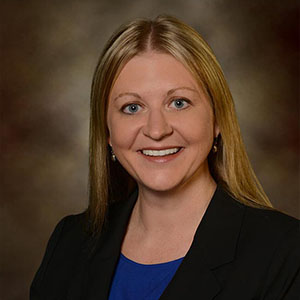A 65-year-old female is hospitalized following right hip replacement three days ago. A GI consult is requested for evaluation of abdominal distention. She has poor oral intake. She's receiving regularly scheduled intravenous (IV) morphine for hip pain. She has been immobile for the last two days. Yesterday she noted abdominal distention. Her last bowel movement was three to four days ago. She last passed flatus one day ago. Complete blood cell count (CBC) and electrolytes are normal. Abdominal films reveal a dilated right-side colon, air in the rectum and normal small bowel. A CT scan of the abdomen and pelvis reveals proximal colonic dilation to 8 centimeters, normal to mildly dilated left-side colon, air in the rectum and no obstruction.

Sarah Enslin, PA-C
University of Rochester Medical Center
Rochester, NY

Stacia Sackmaster, APN-BC
University of Rochester Medical Center
Rochester, NY

Joseph Vicari, MD, MBA, FASGE
Rockford Gastroenterology Associates
Rockford, IL
Sarah Enslin, PA-C, is a physician assistant at the University of Rochester Medical Center in Rochester, NY, with over 10 years of experience as a practicing PA in GI. Sarah serves on several national GI committees and is a member of the ASGE Practice Operations Committee and ASGE APP Task Force.
Stacia Sackmaster, APN-BC, is a family nurse practitioner at Rockford Gastroenterology Associates, Ltd., in Rockford, IL.
Joseph Vicari, MD, FASGE, joined Rockford Gastroenterology in 1997 and has served as managing partner. He previously served as chair of the ASGE Practice Operations Committee and currently serves as councilor on the ASGE Governing Board and co-chair of the ASGE APP Task Force.
- Camilleri M. Acute colonic pseudo-obstruction (Olgilvie’s syndrome). Updated May 31, 2023. UpToDate. https://www.uptodate.com.
- Symptoms and causes of intestinal pseudo-obstruction. National Institute of Diabetes and Digestive and Kidney Diseases. Last Reviewed October 2021. https://www.niddk.nih.gov/health-information/digestive-diseases/intestinal-pseudo-obstruction/symptoms-causes
- Naveed M, Jamil LH, Fujii-Lau LL, et al. American Society for Gastrointestinal Endoscopy guideline on the role of endoscopy in the management of acute colonic pseudo-obstruction and colonic volvulus. Gastrointest Endosc. 2020;91:228-235
- Valle RGL, Godoy FL. Neostigmine for acute colonic pseudo-obstruction: A meta-analysis. Ann Med Surg (Lond). 2014;3:60-64.
- Kayani B, Spalding DR, Jiao LR, Habib NA, Zacharakis E. Does neostigmine improve time to resolution of symptoms in acute colonic pseudo-obstruction? Int J Surg. 2012;10:453-457.